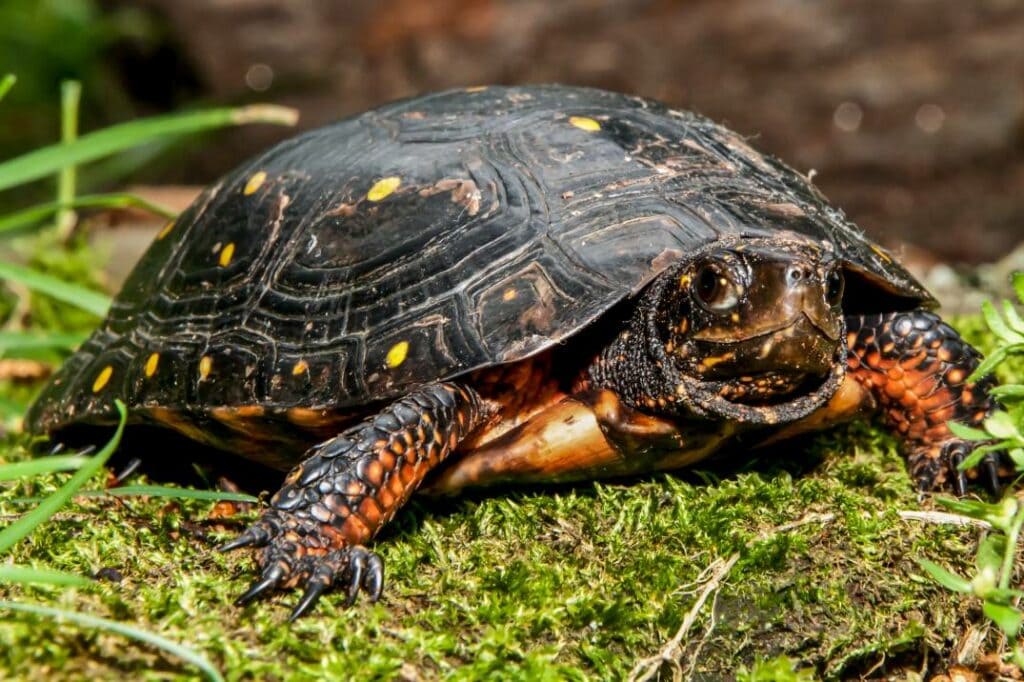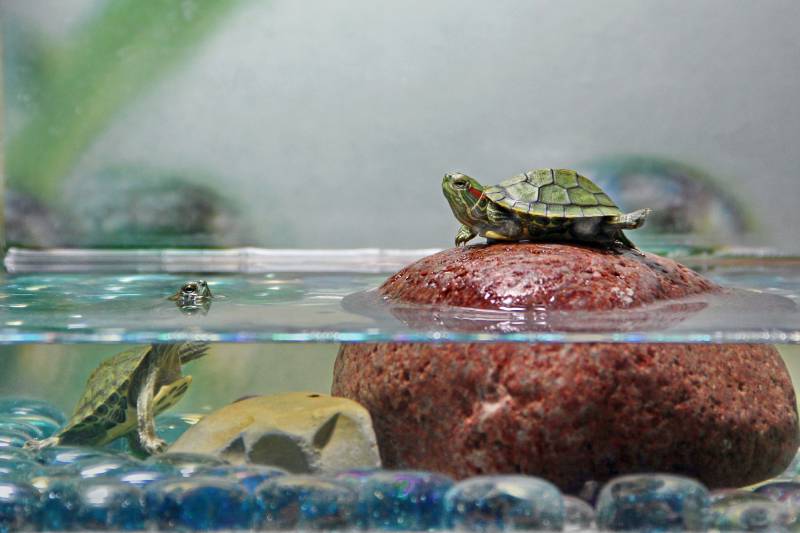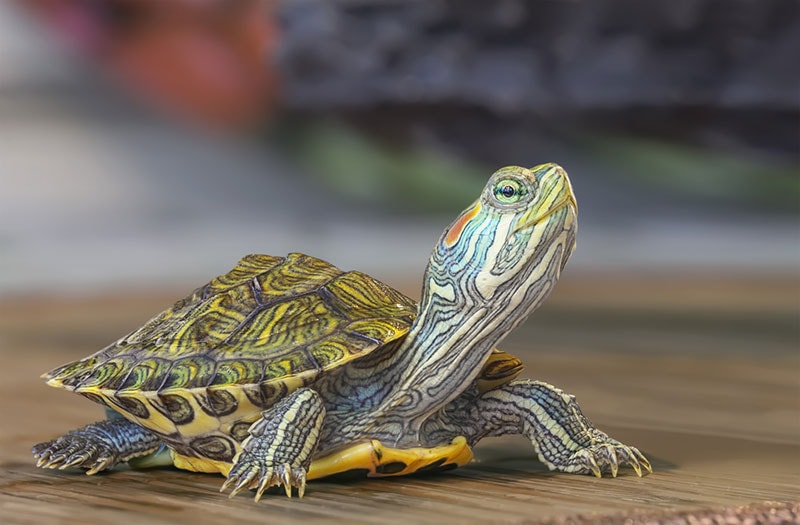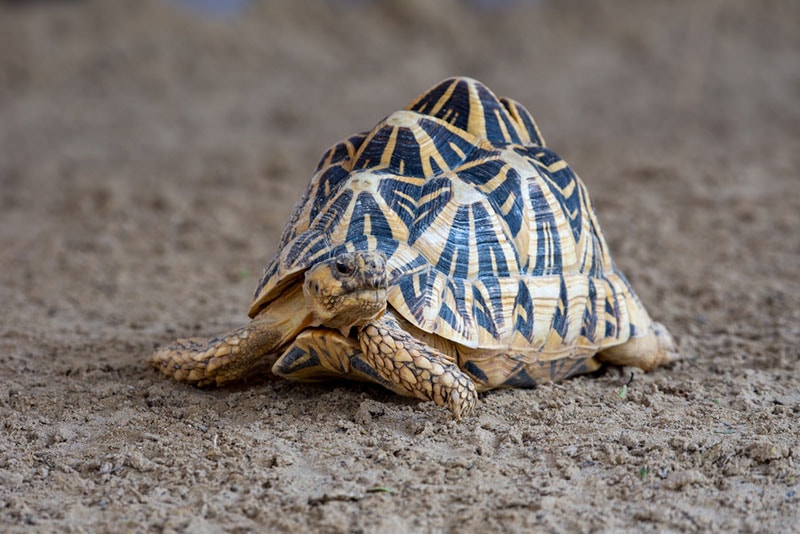How to Tell the Age of a Turtle: 5 Vet-Reviewed Techniques
Updated on

When you acquire a new pet, it’s only natural to want to know everything about it. One of the most essential factors to consider when adopting a turtle is his age. Knowing how old he is when you adopt him allows you to choose the appropriate tank size and diet and guesstimate how much time he’ll be a part of your life.
Unfortunately, unless you know the hatch date of your turtle, it’s almost impossible to know his exact age. If you weren’t provided with the hatch date when you adopted and are curious about your pet’s age, there are several methods you can try to estimate how old he is. Read on to find five techniques for determining your turtle’s age.
The use of male pronouns in this article (such as he, him) is a stylistic choice by the author. This information is applicable to female turtles as well.
The 5 Techniques to Tell the Age of a Turtle
1. Count the Scute Rings
A turtle’s shell has rings much like the rings you’ll see on a slice of wood on a tree stump. Pick one of the “scutes” on the shell and count how many rings you can see. Divide the final number by two, and you’ll have a better idea of your pet’s age.
This isn’t an accurate way of knowing age, but it can give you a rough estimate. At some point during the turtle’s lifespan, the growth rate will slow down considerably, and new rings will be almost impossible to spot. Generally speaking, the more rings your turtle has on its shell, the older he will be.

2. Measure
A turtle’s size can indicate age, especially if he’s young. Measure from tip to tail and then research your turtle’s specific species. You must know the species to use this technique as different species reach maturity at different ages. You can find growth charts for most turtle species online.
For example, red-eared sliders can take about 8 years to attain their full length. They’ll be around 5 to 11 inches by this point, depending on gender.
One problem with this method is that once your turtle has reached his near-maximum size, you can’t use measurements to determine his age. Another downfall of this method is that female turtles may be larger than males (in some species), so you’ll need to take your pet’s sex into account if using the measuring technique to estimate age.
Finally, the biggest downfall with this method is that your pet’s nutritional history can make a very big difference in their growth rates. Pets that have received poor nutrition can look deceptively small for their age.
Note: Turtles bred in captivity often grow faster than their wild counterparts. This can make using the measurement technique less accurate.
3. Dietary Preference
Most turtle species are omnivorous, but as they get older, their dietary preferences change.
Young turtles still in their growth stage almost always prefer meat over vegetables. This is because they require a lot of protein to grow and mature.
Older turtles that have reached their full size are often more herbivorous than carnivorous. They’ll still eat protein if you provide it (which you definitely should), but their diet is more plant-based.
Of course, this method isn’t entirely accurate either, as each individual turtle will have their own diet preferences.

4. Ask the Professionals
An exotic veterinarian can’t provide your turtle’s date of birth, but they are experts in the field of exotic animals and can probably give you a pretty good estimate.
5. Visual Cues
How your turtle looks and moves can also provide insight into his age. Just like humans, younger turtles generally move faster than their older counterparts.
The older a turtle is, the more worn his shell will look due to daily wear and life experience. Dents, scratches, and chips are symptomatic of a long life. Additionally, the coloring of the shell will change as turtles grow. Most young turtles have bright greens and yellows on their shells, while older ones will have darker shades or even black on their shells. Again, this is purely anecdotal. At times, older turtles have remarkably pristine looking shells.

Conclusion
While being curious about your turtle’s age is normal, it only matters in certain circumstances. If you plan on breeding your pet, knowing their age can help you determine the perfect time to breed. Additionally, knowing your turtle’s age at the time of adoption can help you choose the appropriately sized enclosure. Finally, determining the perfect diet for your pet depends on age.
If you’re adopting from a reputable breeder or local shelter, they should be able to provide you with an exact hatch date or an estimate on age so you know what you need to do well in advance of adoption.
- Related Read: How To Tell The Age of a Tortoise: A Step-By-Step Guide
Featured Image Credit: Jay Ondreicka, Shutterstock












